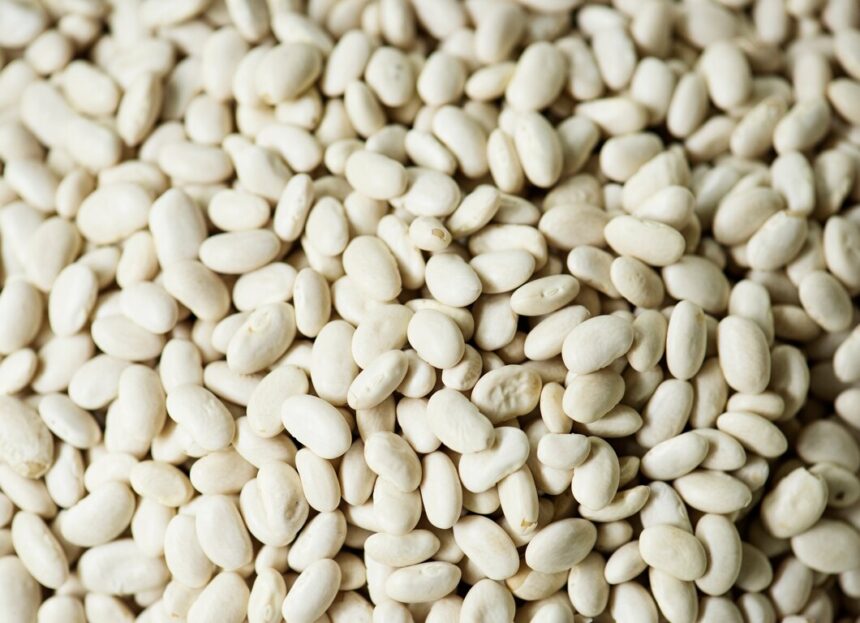Navy beans, known for their versatility in culinary use and nutritional value, are an increasingly popular crop for South African farmers. These small, white beans are ideal for dry-land farming and offer lucrative market opportunities. However, successful navy bean production requires careful attention to soil preparation, planting, pest and disease management, irrigation, and harvesting practices. This article provides a detailed step-by-step guide to growing navy beans from seed to harvest and storage.
1. Soil Preparation and Land Requirements
Navy beans thrive in well-drained loam or sandy loam soils with a pH between 5.5 and 6.8. Farmers should avoid waterlogged soils or soils with heavy clay content, as navy beans are sensitive to excess moisture, which can lead to root diseases.
Steps for Land Preparation:
- Plowing: Deep plowing (20-30 cm) helps break up soil compaction and allows better root penetration.
- Harrowing: After plowing, harrow the soil to create a fine seedbed that will promote even germination.
- Ridge formation: Navy beans perform well when planted on ridges or raised beds, especially in regions prone to heavy rainfall, as this ensures good drainage.
Fertilization Needs:
- Organic matter: Add compost or well-decomposed manure to improve soil fertility and structure.
- Phosphorus (P): Apply phosphorus at planting (e.g., 20-30 kg P/ha) to stimulate early root development.
- Nitrogen (N): Navy beans fix their own nitrogen through symbiosis with Rhizobium bacteria, but a small starter dose (e.g., 10-20 kg N/ha) helps early growth before nitrogen fixation begins.
- Potassium (K): Potassium is essential for seed and pod formation. Apply around 40-60 kg K/ha based on soil test results.
2. Planting Navy Beans
Navy beans are a warm-season crop, typically planted in South Africa from late October to early December.
Seed Selection and Planting Density:
- Choose high-quality certified seeds that are disease-resistant and suited to local conditions.
- Planting depth: Sow seeds at a depth of 3-5 cm.
- Row spacing: Rows should be spaced 40-50 cm apart with 8-10 cm between plants within the row. Aim for a planting density of about 200,000 plants per hectare.
Machinery Required:
- Seed drills or mechanical planters are ideal for precision planting, ensuring the correct seed depth and spacing.
3. Irrigation and Water Requirements
Navy beans require moderate water for optimal growth but are sensitive to water stress during key stages like flowering and pod filling. Depending on the region, navy beans generally need around 400-500 mm of water throughout their growing cycle.
- Irrigation methods: Drip irrigation or sprinkler systems are ideal for providing uniform moisture without over-saturating the soil.
- Irrigation schedule: Watering is critical at the flowering stage and early pod development but should be reduced as the pods mature to avoid moisture-related diseases.
4. Growth Stages and Care
Navy beans go through several growth stages, each requiring specific care and monitoring.
Vegetative Stage:
- Emergence to early vegetative growth (2-4 weeks): At this stage, focus on weed control and early pest scouting. Navy beans are sensitive to weed competition, especially in the first few weeks after germination. Mechanical cultivation or pre-emergence herbicides can be used to manage weeds.
Flowering Stage (5-7 weeks):
- Fertilization: Avoid heavy nitrogen application at this stage to prevent excessive vegetative growth, which can delay pod formation.
- Watering: This stage is sensitive to drought stress; ensure consistent moisture for optimal flowering and pod set.
Pod Formation and Seed Filling (8-12 weeks):
- Insect control: During this stage, scout for pests like aphids and pod borers. Pesticides should only be used when pest populations exceed economic thresholds, to avoid harming beneficial insects.
- Fungal diseases: Watch for common fungal diseases such as anthracnose and root rot. Apply fungicides preventatively during wet conditions or if symptoms appear.
5. Pests, Diseases, and Pesticides
Several pests and diseases can threaten navy beans, especially during flowering and pod formation.
Common Pests:
- Aphids: These insects can transmit viruses and cause leaf curling and stunted growth. Insecticidal soap or neem oil may control light infestations, while chemical pesticides should be used for severe cases.
- Bean pod borer: This pest damages developing pods, leading to reduced yields. Regular scouting and the use of pheromone traps can help detect and control infestations early.
Common Diseases:
- Anthracnose: This fungal disease causes dark lesions on leaves and pods. Apply fungicides as a preventative measure if wet weather is expected.
- Root rot: Caused by soilborne fungi, root rot thrives in poorly drained soils. Improving drainage and crop rotation with non-legume crops can reduce the risk.
6. Weed Management
Weeds compete with navy beans for nutrients, water, and light. Implement a robust weed management plan to ensure healthy bean growth.
- Herbicides: Use pre-emergence herbicides before planting to suppress early weeds, and post-emergence herbicides during the growing season as needed.
- Mechanical cultivation: Cultivate between rows early in the season to uproot young weeds. Be cautious not to disturb bean roots.
7. Harvesting Navy Beans
Navy beans are typically ready for harvest 90-120 days after planting when the pods have turned yellow and the seeds are firm and dry. Timely harvesting is critical to avoid yield loss due to shattering or moisture reabsorption in mature pods.
- Harvesting methods: Navy beans can be harvested mechanically using a combine harvester equipped with specialized bean harvesting headers to minimize seed loss.
- Drying: Ensure beans are dried to around 14% moisture content before storage to prevent mold growth and spoilage.
8. Storage and Post-Harvest Management
After harvest, proper storage is essential to maintain the quality of navy beans.
- Cleaning: Use cleaning equipment to remove debris and foreign material from harvested beans.
- Storage conditions: Navy beans should be stored in a cool, dry environment. Ensure proper ventilation to avoid condensation, which can lead to mold or insect infestation.
- Pest control: Regularly inspect stored beans for pests like weevils. Use chemical fumigation or biological control methods if infestations occur.
Growing navy beans in South Africa can be a profitable venture if the crop is managed correctly from seed to storage. Ensuring proper land preparation, irrigation, pest management, and harvesting practices are essential for maximizing yield and quality. By following these detailed steps, farmers can produce high-quality navy beans that meet market demands while minimizing the risk of crop loss due to pests, diseases, or environmental stressors.
Join 'Farmers Mag' WhatsApp Channel
Get the latest Farming news and tips delivered straight to your WhatsApp
CLICK HERE TO JOIN






